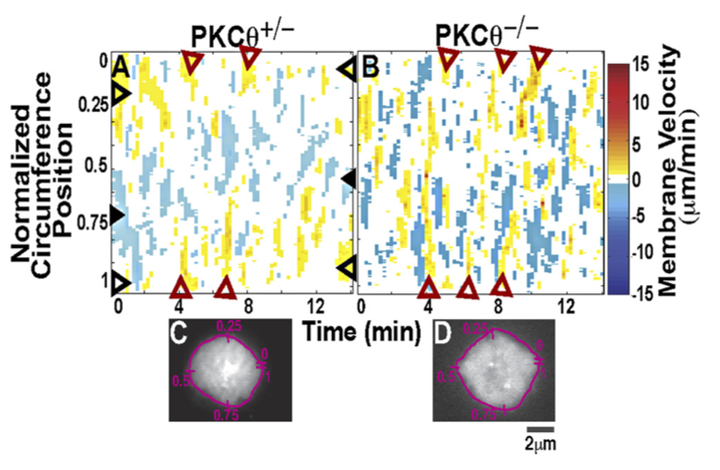Opposing effects of PKC-theta and WASp on symmetry breaking and relocation of the immunological synapse

Abstract
The immunological synapse (IS) is a junction between the T cell and antigen-presenting cell and is composed of supramolecular activation clusters (SMACs). No studies have been published on naive T cell IS dynamics. Here, we find that IS formation during antigen recognition comprises cycles of stable IS formation and autonomous naive T cell migration. The migration phase is driven by PKCθ, which is localized to the F-actin-dependent peripheral (p)SMAC. PKCθ−/− T cells formed hyperstable IS in vitro and in vivo and, like WT cells, displayed fast oscillations in the distal SMAC, but they showed reduced slow oscillations in pSMAC integrity. IS reformation is driven by the Wiscott Aldrich Syndrome protein (WASp). WASp−/− T cells displayed normal IS formation but were unable to reform IS after migration unless PKCθ was inhibited. Thus, opposing effects of PKCθ and WASp control IS stability through pSMAC symmetry breaking and reformation.